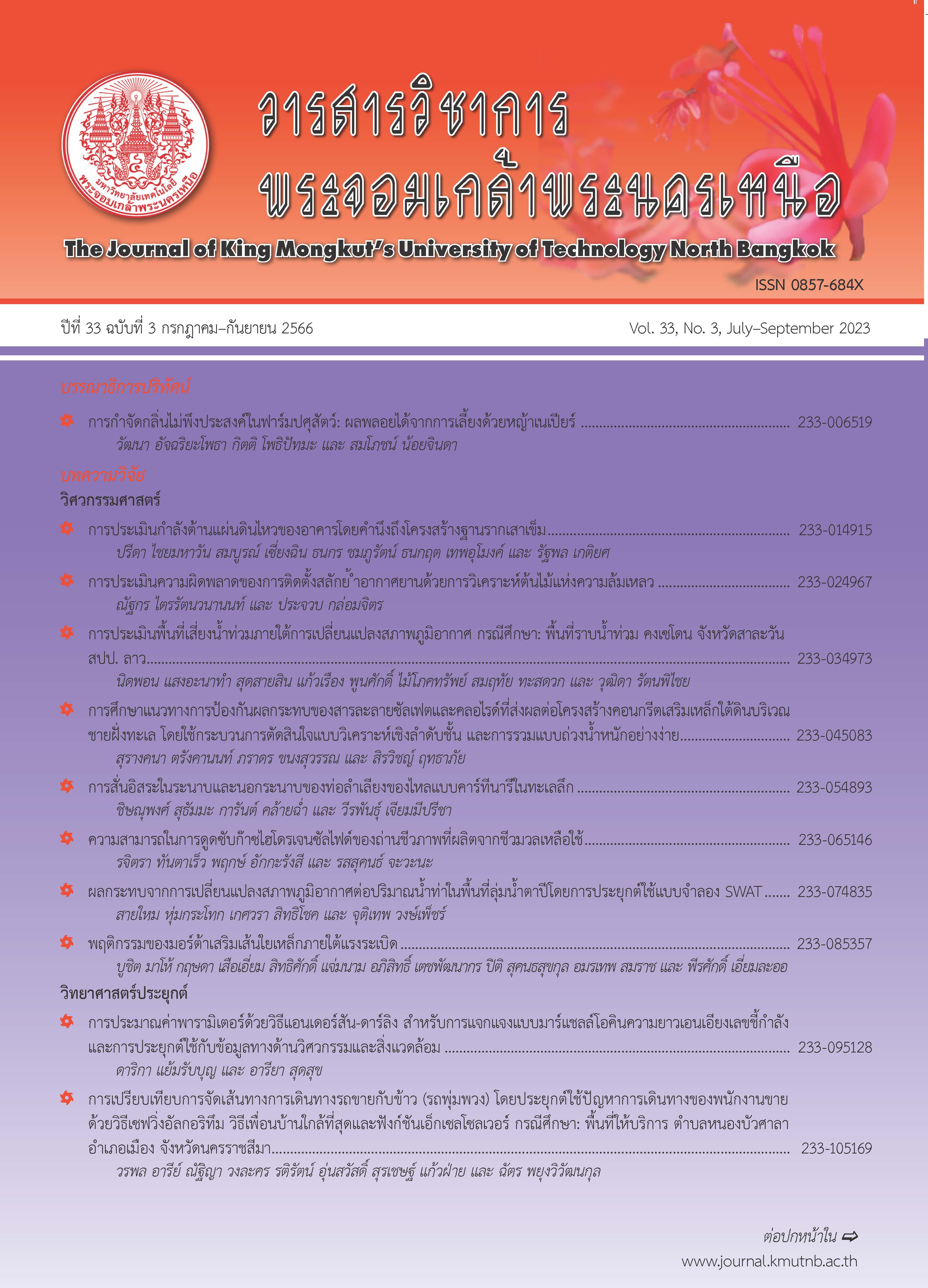A Technology Transfer Framework for Rubber Farmers in Thailand
Main Article Content
Abstract
This research aims to develop and evaluate a technology transfer framework for technology adoption among rubber plantation farmers in Thailand. The study is a combination of qualitative and quantitative methods. A questionnaire and interviews were used together for data collection from 55 rubber plantation farmers in Chang Klang and Na bon districts. Exploratory factor analysis and content analysis were conducted. As results, the technology transfer framework consists of six steps, i.e., getting to know technology, learning about technology usage, technology trials, learning about problem solving, practical application along with technology implementation and transfer. In the evaluation phase, the results found that after applying the proposed framework, the sample groups of Chang Klang and Na bon rubber farmers could learn technologies rapidly and they were able to use acquired knowledge to solve their problems effectively. Besides, the exploratory factor analysis results revealed six contributing factors that affect technology transfer and technology acceptance among the subjects. Key factors constitute: perceived ease of use, perceived benefits, usage intention, usage behavior, social influence and technological facilities. The chi-square test determined a statistically significant relationship between variables: The Chi-Square statistic was 4.433, degrees of freedom (df) equaled 6, p-value equaled 0.618, the relative harmony index (CFI) equaled 1.000, and the Correlation Index (NFI) equaled 0.895. Based on the result, the framework can be further applied. It would bring significant benefits and facilitate quality improvement for the specified farmers.
Article Details

This work is licensed under a Creative Commons Attribution-NonCommercial-NoDerivatives 4.0 International License.
The articles published are the opinion of the author only. The author is responsible for any legal consequences. That may arise from that article.
References
S. Malisuwan, W. Kaewphanuekrungsi, and D. Milindavanij, “Digital divide in Thailand: Analysis and recommendations,” International Journal of Advanced Research in Engineering and Technology, vol. 7, pp. 41–46, 2016.
P. Chabplan and N. Porrawatpreyakorn, “Factors affecting thai rubber farmers’ technology transfer acceptance,”in Proceedings of The International Conference on Robotics, Informatics, and Intelligence control Technology (RIIT2019), 2019, pp. 22–27.
E. M. Rogers, S. Takegami, and J. Yin, “Lessons learned about technology transfer,” Technovation, vol. 21, pp. 253–261, 2001.
A. P. Massey and M. Montoya-Weiss, “A knowledge exchange perspective of technology transfer,” in Proceedings of the Thirtieth Hawaii International Conference on System Sciences, 1997, pp. 106–115.
E. Corti and C. I. Storto, “Technology transfer to small-medium firms in late-developing areas: The concept of technology notoriety,” in Proceedings of the 2000 IEEE Engineering Management Society. EMS - 2000 (Cat. No. 00CH37139), 2000, pp. 386-390.
F. Davis, “A technology acceptance model for empirically testing new end-user information systems: Theory and results,” Ph.D. dissertationin, Department of Mannagement, Sloan School of Management, Massachusetts Institute of Technology, Cambridge, MA, 1985.
S. Chavesuk and S. Vongjaturaphat, “Theory of acceptance of use of information technology,” KMITL Information Technology Journal, vol.1, 2012 (in Thai).
F. B. Mamat and S. B. Roslan, “Critical Success Factors(Csfs) on techno;ogy transfer effectiveness in manufacturing industry: A critucak review,”International Journal of Business, Economics and Law, vol.1, pp. 163–170, 2012.
S. M. Chege, D. Wang, S. L. Suntu, and O. K. Bishoge, “Influence of technology transfer on performance and sustainability of standard gauge railway in developing countries,” Technology in Society, vol. 56, pp. 79–92, 2019.
M. Majidpour, “International technology transfer and the dynamics of complementarity: A new approach,” Technological Forecasting and Social Change, vol. 122, pp. 196–206, 2017.
Y. Chen, “Comparing North-South technology transfer and South-South technology transfer: The technology transfer impact of Ethiopian Wind Farms,” Energy Policy, vol. 116, pp. 1–9, 2018.
M. N. Sharif and A. K. M. A. Haq, “A timelevel model of technology transfer,” IEEE Transactions on Engineering Management, vol. EM-27, pp. 49–58, 1980.
J. M. Perkins, “Social perspectives on technology transfer,” IEEE Transactions on Professional Communication, vol. 36, pp. 185-189, 1993.
J. R. Lavoie and T. Daim, “Towards the assessment of technology transfer capabilities: An action research-enhanced HDM model,” Technology in Society, vol. 60, p. 101217, 2020.
T. K. Sung and D. V. Gibson, “Knowledge and technology transfer: Levels and key factors,” in Proceeding of 4th International Conference on Technology Policy and Innovation, 2000, pp. 4.4.1–4.4.9..
S. Wongwiwatthananukit, Dictionary of research and statistics vol. 3rd. Chulalongkorn University: Bangkok, 2012. (in Thai)
J. F. Hair, W. C. Black, B. J. Babin, and R. E. Anderson, Multivariate data analysis. Upper Saddle River: NJ: Prentice Hall, 2010.
R. B. Kline, Principles and Practice of Structural Equation Modeling: New York, The Guilford Press, 2005.

